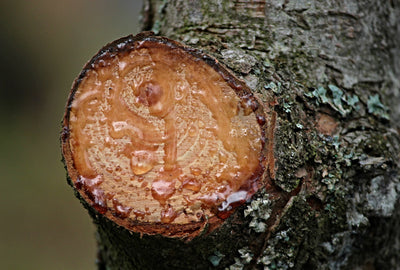PLA is a versatile plastic that is becoming increasingly important. The material is based on renewable raw materials and has established itself as an environmentally friendly alternative to conventional plastics. The material plays an important role, especially in the area of 3D printing. In this article you will learn everything about the properties, areas of application and advantages and disadvantages of the plastic and the reasons why the material can be a first-class choice for both hobbyists and professional users.
Chemical structure and composition of PLA
PLA plastic stands for polylactide and describes a biodegradable plastic. It is made from renewable resources such as corn starch or sugar cane and has a simple chemical structure. Microorganisms from the lactic acid convert the starch into a polymer. This is made up of repeating units of the monomer lactide. Lactide is a chiral molecule composed primarily of carbon, hydrogen and oxygen and can exist in two stereoisomeric forms: L-lactide and D-lactide. Polylactide can be produced either from pure L-lactide or a mixture of L- and D-lactide.
Differentiation of the material from other plastics
Polylactide is mostly made from renewable raw materials, especially corn starch and sugar cane. In contrast, many other plastics are produced from fossil fuels such as petroleum. In addition to the method of production, the material's biodegradability sets it apart from most other plastics. Under certain conditions, microorganisms can decompose the material into natural substances, whereas this process is not available with normal plastic. One property of the material is that it has a limited temperature resistance. The material begins to melt at temperatures above 150 degrees Celsius, which makes it less suitable for applications that involve increased heat. However, due to its relatively easy processing and low melting temperature, polylactide is a popular material for 3D printing.
Physical and mechanical properties of PLA
The melting point of polylactide is typically between 150 and 160 degrees Celsius. At these temperatures, the plastic changes from a solid to a liquid state. The plastic can be deformed from around 65 degrees Celsius. This makes the material suitable for 3D printing. The material has good strength in contrast to printing materials such as ABS. Hardness varies depending on manufacturer and composition, typically in a range of 65 to 80 on the Rockwell hardness scale. Polylactide is flame-retardant, UV-resistant and can only absorb moisture to a small extent. This makes the bioplastic ideal for storage. Compared to common 3D printing materials such as ABS or TPU, the material is considered less flexible. Polylactides tend to be more brittle and are therefore more suitable for applications where stiffness and hardness are required. If you need flexible parts, the material is not necessarily the best choice.
Uses of PLA

PLA is primarily used for packaging, medical implants and 3D printed models. The material is available in a wide range of colours as it can be easily dyed. This property makes the plastic ideal for aesthetic applications. The versatile bioplastic material is now one of the most commonly used raw materials in 3D printing. Due to its environmentally friendly properties and wide range of possible uses, polylactide has gained a permanent place in various industries alongside 3D printing:
- The barrier properties against moisture and fat, the biocompatibility and degradability make polylactide a sought-after material for food packaging.
- Plastic carrier bags and tableware such as plates and cups can also be made with polylactide.
- In medicine, PLA is used in the production of biodegradable implants. Whether screws, plates or stents - the bioplastic allows implants to be slowly broken down in the body after they have fulfilled their function.
- Polylactide can also be used to produce fibers and fabrics and thus serve as a raw material for textiles and clothing. The material is primarily used for outdoor items, T-shirts and sportswear.
- Due to its biodegradability, the material is used in horticulture and agriculture. A mulch film made from polyactide can promote plant growth and suppress weeds. After the season, the mulch decomposes and leaves no waste behind.
3D printing with polylactide

PLA is a popular material for 3D printing due to its relatively easy processing and low melting temperature:
- Polylactide can be dyed into any color imaginable.
- The material is easy to use, environmentally friendly and offers the possibility of creating precise and detailed models in 3D.
- 3D printing with PLA does not require a heated printing plate and typically produces fewer unpleasant odors than other plastics.
- During the printing process, the corn starch it contains creates a sweet scent that is not reminiscent of melted plastic.
- Other plastics often require special printing conditions and equipment.
Combine Mr Beam laser cutter with 3D printer - engrave PLA

PLA can be engraved by Mr Beam. In this way, 3D printing can be wonderfully combined with the laser machine. If you want to add lettering, number combinations or symbols to your polylactide model, Mr Beam will be happy to help you. The design options are diverse and will be professionally implemented according to your specifications.
Environmental aspects of polylactide
PLA has a number of environmentally friendly properties. The material is:
- biodegradable
- is made from plant-based raw materials
- produces comparatively lower greenhouse gas emissions
- usually does not contain harmful chemicals
- Because it is compostable, it is easier to dispose of than many other plastics
PLA is biodegradable and will decompose under appropriate conditions, making the material a more environmentally friendly alternative to traditional plastics. By producing from plant-based raw materials that can be grown sustainably, the consumption of non-renewable raw materials is reduced. Compared to plastics such as polyethylene and polypropylene, polylactide offers lower greenhouse gas emissions. There is also less toxicity with the material because PLA does not contain any questionable substances such as the plasticizers found in many plastics. Disposal is also easy because the material can be quickly broken down in industrial composting plants.
Alternatives to PLA
There are various bio-based plastics that are made from renewable raw materials such as starch, cellulose or algae. Examples are polyhydroxyalkanoates (PHA) and polybutylene succinate (PBS). The use of recycled plastics, especially from post-consumer recycling, also reduces the need for new plastics and helps reduce waste. To reduce environmental impact, some companies are developing blends of traditional plastics and bio-based materials. The choice of an environmentally friendly plastic depends on the specific requirements of the intended use. For certain applications, an alternative to polylactide may make more sense.




1 comment
Danke für diese tolle Info. Hilft mir sehr viel weiter und erspart mir viel Zeit bei der Recherche. Merci